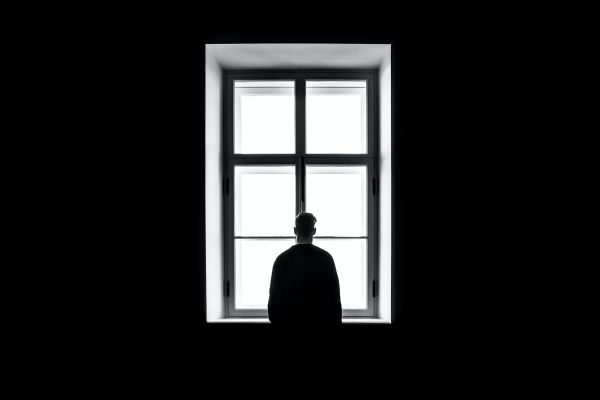Suicide Notes
They come in all varieties, including silence.
Posted October 6, 2012 Reviewed by Ekua Hagan
Key points
- The formal study of suicide notes started with a collection of 721 discovered at a coroner's office, written by people ranging from age 13-96.
- Researchers have found that quite a few suicide notes are emotionally neutral, giving lists, admonishments, or instructions.
- A study showed that almost three-fourths of those who completed the act of suicide had attempted or threatened it in the past.
When Greg deVillers was found dead in his bed, surrounded by rose petals, his wife Kristen said that this parting gesture was his suicide note: It was symbolic of the crushing of his overly romantic ideas about their crumbling marriage. Detectives were skeptical that a man would stage his death scene like this, and an investigation led to Kristen’s conviction for poisoning her husband. She had purchased the rose.
The discipline of suicidology
A collection of suicide notes launched the discipline of suicidology, founded by Edwin Shneidman and his colleagues. During the 1950s, Shneidman was asked to write condolence letters to relatives of suicide victims. While he was searching through records at the Los Angeles County Coroner’s office, he discovered a stash of 721 suicide notes. They’d been written by people ranging in age from 13 to 96. What a researcher’s treasure trove!
This cache represented the notes collected by the coroners between 1944 and 1953, but this meant that only about 15% of recognized suicidal decedents had left them.
The Discomfort Relief Quotient (DRQ)
With Norman Faberow, Shneidman designed several projects. For example, they used the Discomfort Relief Quotient (DRQ) to compare the number of “discomfort thought units” with the number of “relief thought units” and “neutral thought units.” They found that whatever feeling was expressed – rage, hatred, vengeance, fear, or self-loathing – was intense. But quite a few notes were neutral: They gave lists, admonishments, or instructions. A number of note-writers simply expressed relief over having made the decision.
The researchers wanted a control group for one project, but this proved difficult: People who survive generally destroy notes they’d written. Thus, Shneidman and Faberow sought out people who matched many characteristics of the successful suicide victims and asked them to write hypothetical notes while imagining that they were about to kill themselves.
Thirty-three male, white, married, Protestant, native-born genuine suicide note-writers were matched against 33 males of similar characteristics. All were from Southern California. (The researchers understood that the study would not be representative, but they viewed it as a first step in a continuing study.)
Comparing actual notes with the simulated ones, the researchers found significantly more thought units in the genuine notes compared with the fictitious notes. “The genuine note-writers apparently feel the need to say more in this last communication.”
There were also more discomfort units among the genuine suicide notes, which were also more emotionally intense (especially for hatred, self-blame, and vengeance). There was no quantitative difference between the groups on relief statements.
The most dramatic difference showed up in the neutral category: The genuine note-writers included much more neutral content, such as giving instructions or listing things to do (e.g., who gets this or that item from the decedent’s possessions).
Shneidman and Faberow concluded that genuine note-writers had accepted the fact that within a brief timeframe, they would be dead – an existential quality missing from the controls’ frame of reference.
Given how often the genuine suicides admonished the living, the researchers surmised that the suicidal person was trying to exercise one last bit of power in the world, as if his death added weight to his requests and requirements.
Shneidman and Faberow found that it was nearly impossible to distinguish a potentially suicidal person from case details alone, except for certain “red flag” conditions such as paranoid schizophrenia or reactive depression. Almost three-fourths of those who completed the act had attempted or threatened it in the past. About 50% of those who killed themselves after being discharged from a hospital accomplished the act within three months.
On standard psychological tests, individuals who had threatened suicide vs. attempted it showed more guilt, agitation, and aggression in their responses.
Sentiments of suicide note-writers
Suicide notes can offer valuable information (but not always!) about the reason people kill themselves and their psychological state at the time of death. Sometimes the motive is spelled out, sometimes it’s clear only indirectly.
Note-leavers sometimes feel a need to say something to someone they’ve left behind, whether a harsh word, an apology, an explanation, or just a to-do list. The form might be a single phrase, several pages, a series of Post-it notes, or even a videotape.
Among the typical sentiments expressed are:
- I can’t find my place in life.
- This is best for all concerned.
- I don’t want to go, but there is nothing else to do. I've never been much good.
- I’m all twisted up inside.
A divorced woman, age 61, wrote: “You cops will want to know why I did it, well, just let us say that I lived 61 years too many. People have always put obstacles in my way ... I am not insane. My mind was never more clear. It has been a long day. The motor got so hot it would not run so I just had to sit here and wait. The breaks were against me to the last. The sun is leaving the hill now so hope nothing else happens.”
Many more studies have been done since Shneidman found his first set of notes, and much more is now known about the suicidal mind, but in many cases, it still remains a mystery.
If you or someone you love is contemplating suicide, seek help immediately. For help 24/7 contact the National Suicide Prevention Lifeline, 1-800-273-TALK, or the Crisis Text Line by texting TALK to 741741. To find a therapist near you, see the Psychology Today Therapy Directory.



















